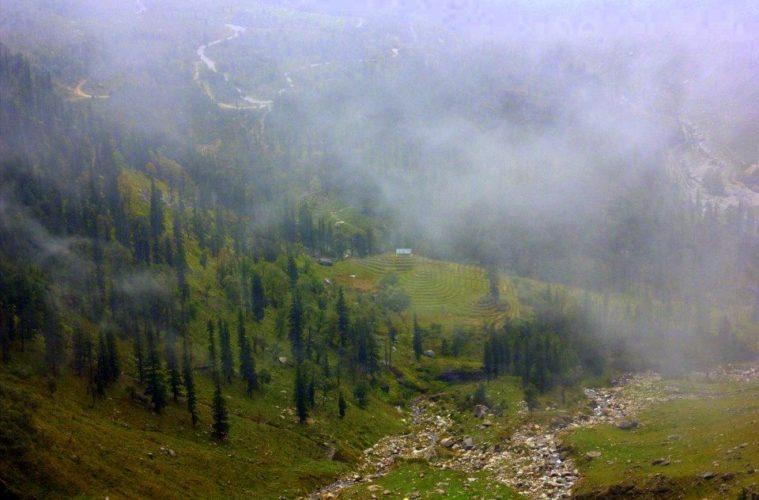In 2016, when I visited Venice alone with my newborn, I came back home feeling completely drained. After that, there was a perpetual joke of me needing a vacation from the vacation. Needless to say, it was hectic due to all the things I wanted to do, places I wanted to see, coupled with the new parent sleep deprivation. I swore to myself that I would never ever put myself through a grinder again and chose to ease my pace. Thus slow travel came into my life along with the amazing discovery of slow food and I realized how much more relaxing vacations could be.
Table of Contents
What is slow travel?
Though slow travel and slow food are the hottest trends in the tourism industry at the moment, they have been there for centuries. Think of the medieval travelers we read about in school and their detailed travelogues which mentioned lifestyle, clothes, food, and customs of various places around the world. They were the first “slow travelers” per se and thanks to them, we have a vivid description of the culture of that time. When we talk about slow travel, we mean the mindset that selects to explore a destination thoroughly and to experience the local culture, rather than squeezing in too many sights. It gives the opportunity to experience a much popular destination in a whole new way and go deeper into the local/regional culture.

North Indian mountain food PC Shutterstock/Mishra27
Fruit picking trails of Nainital
During my slow travels, I discovered the joy of slow food and the combination of both is an amazing experience. Though slow food is a huge organization that promotes local food and traditional cooking to sustain the local ecosystem, in the travel industry, it has incorporated cooking classes and food tours. During travels, I have discovered many gems of local cuisines and have been amazed at how beautifully traditional culinary art is intertwined with a sustainable lifestyle. Thankfully this trend has risen sharply in the past few years and in India, local culinary holidays, farm stays, and food trails are gaining popularity. Lots of fruit picking trails have come up and my favourite one centers in the Kumaon region. There is much joy in connecting with the fruit we eat and the Kumaon region of Uttarakhand is full of natural resources. One of the best ways to enjoy this is to base yourself in one of the budget and premium accommodation options in Nainital and walk around this charming hill station to explore the local natural food.

Kafal fruit of Uttarakhand PC Shutterstock/Handsome_Phadi
The local joys of Nainital
Kafal is one of the local fruits of Kumaon. Scientifically known as Myrica Esculenta, these delicious darkish red wild berries are so popular that they feature in the representative song of the Garhwal Rifles and the Kumaon Regiment “Bedu pako baarah maasa, narayni kafal pako chait (bedu ripens every month, but kafal only in April-May). Another very unique local fruit of the Kumaon is the Hisalu. Found mainly in Almora and Nainital, these sweet yellow wild berries are found only in the forests. These little fruits grow in thorny bushes, ripen in May-June and require careful picking. Well, foraging hisalu is not your cup of tea, then simply buy them from the roadside local vendors during the ripening season. You will find plenty of hisalu on sale in fruit shops in and around Nainital.

closeup of Rubus ellipticus ( hisalu) fruits PC Shutterstock/JeewanChandra
Slow food and slow traveling in Nainital
Food is synonymous with the character of a place and none other than Anthony Bourdain advocated the concept of discovering a destination through the local cuisine. According to him, “Food is everything we are. It’s an extension of nationalist feeling, ethnic feeling, your personal history, your province, your region, your tribe, your grandma. It’s inseparable from those from the get-go.” That is the cuisine of Kumaon is as robust, straightforward, and wholesome as the region. The local Pahadi or Kumaon food showcases the region’s indigenous natural products and you will find plentiful use of lesser-known ingredients like hemp/bhang seeds, rhododendrons, stinging nettle (sisunak/bichchu sag), wild asparagus (lingadu sag), jakhiya, faran, chippi, gandherni (a fragrant bark) and jumboo along with fenugreek, mustard, and coriander. Just tuck into a hearty platter or Kumaoni thali of rice, phanu or dubuk (slow cooked lentils), alu ke gutke (tempered potato fry), bhang/hemp chutney; settle down on a hammock with the two very popular Pahadi men, Ruskin Bond and Jim Corbett; listen to the sweet nothings of the rustling deodar, and feel the mountain breeze ease your troubles away. Life is good in the hills of Nainital.
RESPONSIBLE TRAVELING-BECAUSE I CARE


